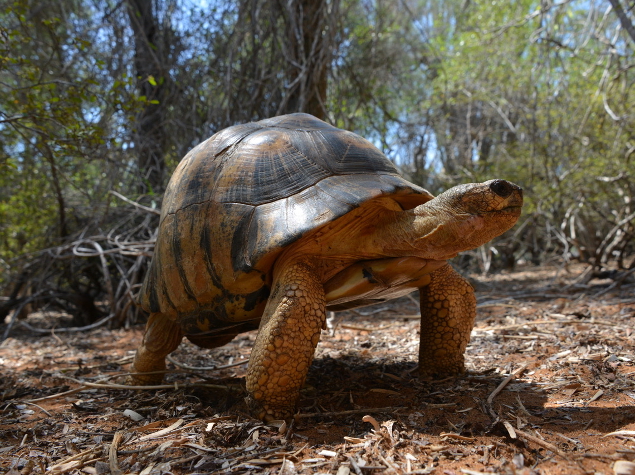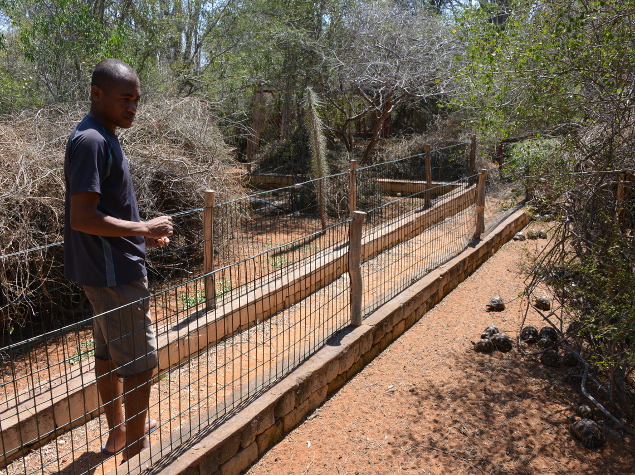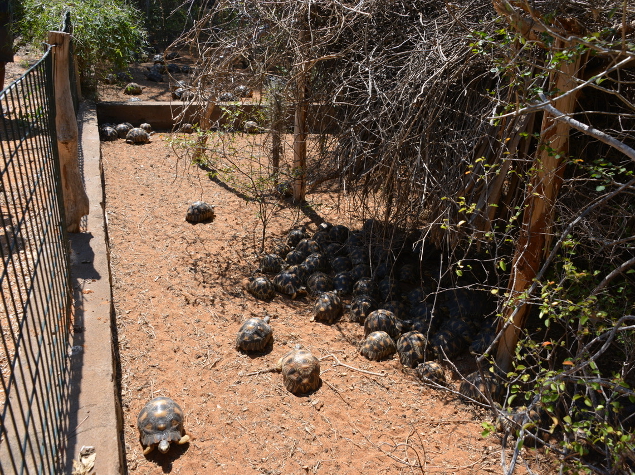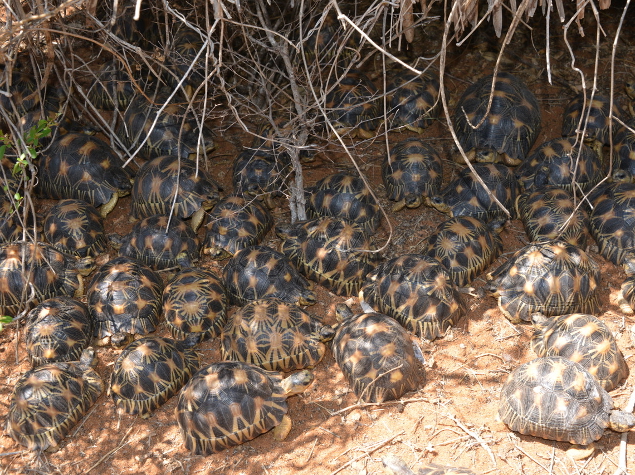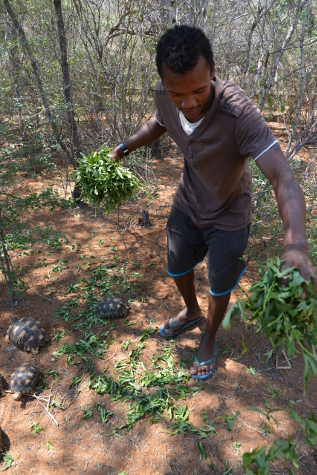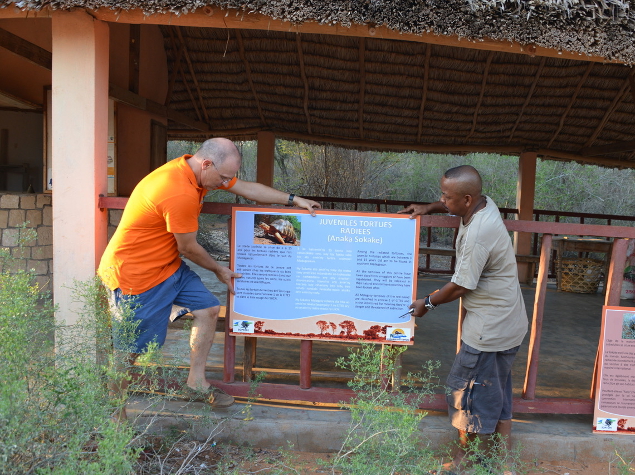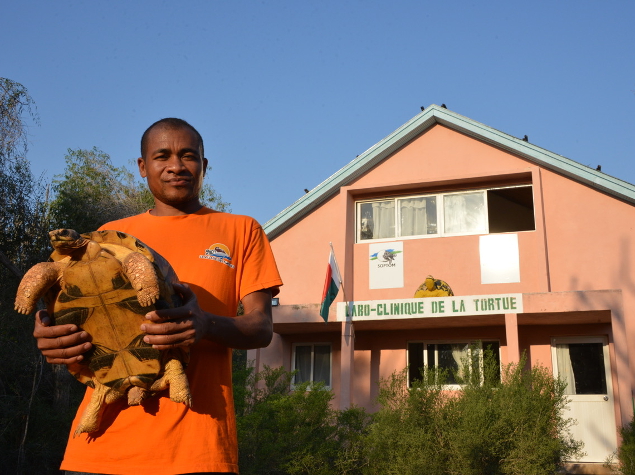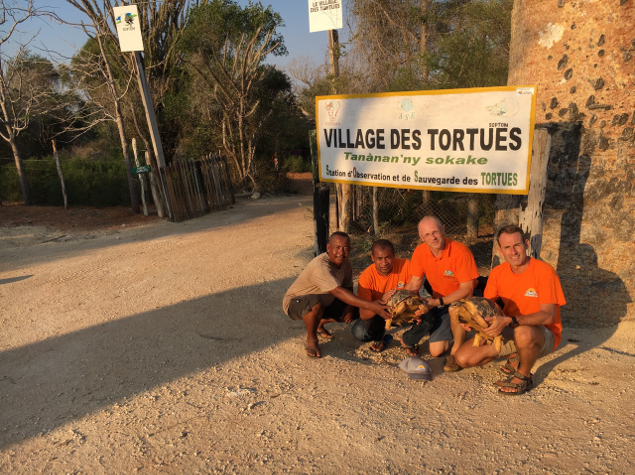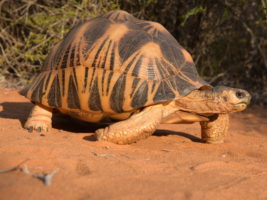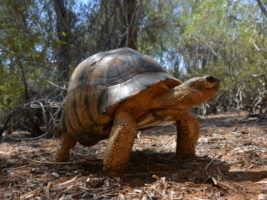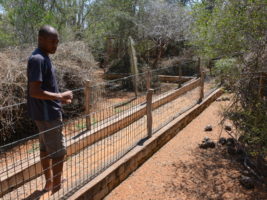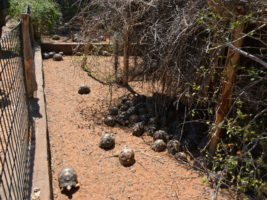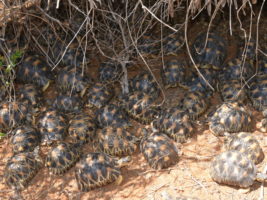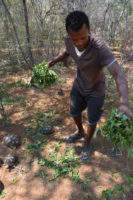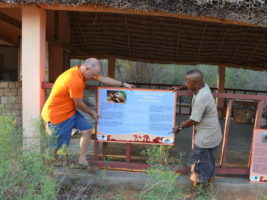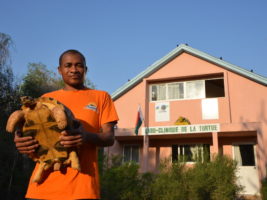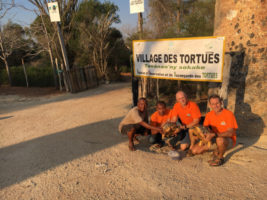Project to renovate and increase security at the ‘Mangily Tortoise Village’
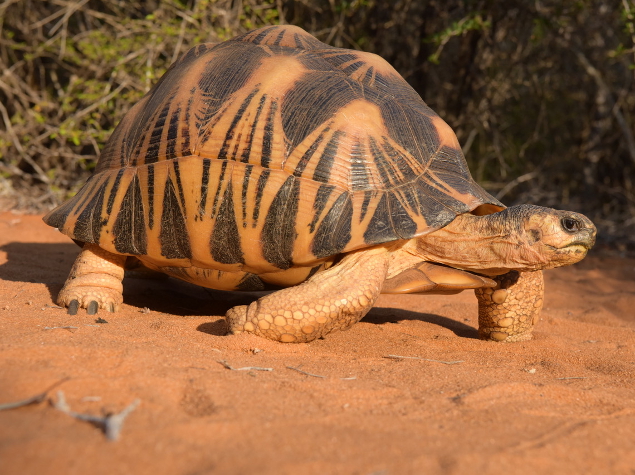
The radiated tortoise (Astrochelys radiata) is the symbol of the southern part of the island of Madagascar. It owes its name to the yellow lines that radiate from the centre of each black plate of the shell, forming a star pattern. Scientists estimate that the total population has fallen from 12 million individuals in the past to 6 million today. While this is still a large number, the IUCN has classified the species as critically endangered because of its dramatic decline. A 2005 study calculated that if the number of tortoises taken from the wild – around 240 000 each year – remains at this high level, the species will be extinct by 2050.
Radiated tortoises are captured for their meat (especially the liver) or for the pet trade. They are also believed to protect poultry against disease. According to a WWF survey, small farmers themselves capture the tortoises in exchange for seeds for agriculture.
In April 2018, 10 976 radiated tortoises were found by the Malagasy authorities on a private property. Following their seizure, in line with Malagasy regulations, the Regional Department of the Environment, Ecology and Forests (DREEF) took the animals to the ‘Mangily Tortoise Village’, near Toliara. This reserve, set up by SOPTOM and ASE was designed to hold around 5 000 animals and cannot receive 10 000 more in its current state.
The aim of this project is to renovate the Tortoise Village and increase its security:
- New enclosures are to be built to increase intake capacity.
- The fence that encloses the reserve’s 37 hectares will be strengthened to prevent theft. Security patrols are to be reinforced.
- Health and safety rules will be tightened and the team’s knowledge enhanced.
- An International Solidarity Volunteer will also be recruited for two years.
- A market garden will be set up to encourage the involvement of Mangily villagers and meet 50% of the tortoises’ nutritional requirements.
- Educational resources for visitors will also be developed.
FINAL REPORT SUMMARY (OCTOBER 2020):
Over the funding period, the existing cages have been reinforced and new ones built up. The perimeter fence has been consolidated too. Other infrastructures have been restored: guesthouse, learning areas… Vets trained the team on the detention conditions, hygiene, care and feeding. The International Solidarity Volunteer could not be recruited but the SOPTOM’s team went on-site and trained a youngster who stayed one year in the Tortoise Village. A neighboring association launched a large gardening project nearby the turtle village, with financial means more important. SOPTOM decided to work with them in a project aiming to recycle the unsold and non-recoverable product to feed turtles, in the absence of an own gardening project.
A releasing project has been identified; the goal now is to proceed to the release of more capable individuals.

